Introduction to Metal Preparation (2 of 7) outlines the steps needed to do a quality metal preparation job on your own gun. Not just the actual steps in polishing, but the first steps you need to know in order to do a quality job. The video also shows the various finishes used by the manufacturers on their original parts, giving you a complete set of guidelines to follow so you can do a professional job yourself and save money. Most importantly, it will give you the satisfaction of doing a quality job, yourself.
For convenience we’ve divided the original videotape into the following sections, which you can navigate to using the following links:
- Restoration Concepts
- Part 1: Tools & Tips (currently viewing)
- Part 2: Screws
- Part 3: Disassembly
- Part 4: Polishing
- Part 5: Packaging
- Final Thoughts & Credits
Episode Notes:
Tools
The following is a list of tools used in firearm restoration. This list will vary depending on the type of firearm.
- Safety glasses, dust mask, protective gloves
- Assembly/disassembly manual for your firearm
- Heavy-duty bench vise with padded jaws
- Pin vise (for holding small parts)
- Files with safe edges:
- Large, mill
- Medium, #2
- Small
- Assorted needle files
- Slot file
- Screwdriver set with hollow ground bits
- Ball peen hammers with polished faces
- Plastic headed hammer
- Set of pin punches
- Abrasive cloth:
- 80 thru 600 grit
- 0000 steel wool
- Simichrome polish
- .0025″ wire brushing wheel and bench grinder
- Oil
- Acraglas-gel
- Release agent or wax
- Wood sanding blocks and dowels
- Bluing remover
- Degreaser
Tools are available from Brownells
Making Jigs
You will need:
- Acraglas-gel*
- Wax or release agent
- Cotton swabs
- Small wooden blocks
- Parts to be attached
Some small parts of the action may be too hard to hold and polish at the same time.
The following steps outline the process of building a jig to hold the part during polishing:
- Attach part to small wood block using the appropriate screw. Be sure the screw does not protrude above the surface.
- Remove part and coat completely with wax or release agent. Re-attach to block.
- Mix Acraglas-gel according to manufacturer’s instructions. Build up around part, and let Acraglas set up. Remove part and let harden.
- Re-attach part to hardened jig and place in vice.
- You are now ready to begin polishing.
Tip: Clean file or change sandpaper often to prevent scratching the surface.
Making a Lift or Pull
You will need:
- Inletting black
- Cotton swabs
- Transparent tape
- White paper
Before beginning, take lifts or pulls of all engraved, lettered or numbered areas on your firearm.
These will be used by the engraver when re-cutting the engraving after polishing.
Remember, it is EXPENSIVE to have engraving re-cut, so polish those areas very carefully.
- Swab inletting black on area to be lifted.
- Place transparent tape on area, gently smooth to pick up all of the detail.
- Remove tape and place on white paper. Store Safely.
Tip: Attach tape in front of area to be lifted. This will prevent smearing.
Thanks for watching! Feel free to use the comments below for thoughts and questions.

0 Comments